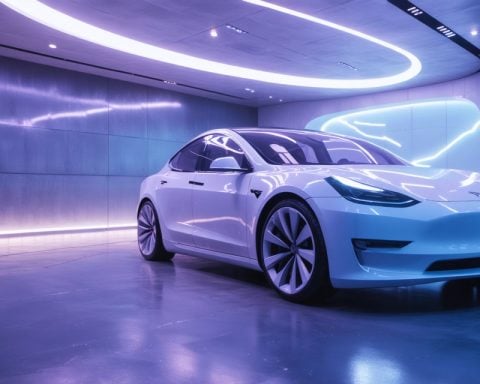The Dilemma of Clean EV Production
Electric vehicles (EVs) are often hailed as a key solution to combat climate change. However, recent research from Princeton University reveals a concerning truth: the production of essential minerals for EV batteries, mainly nickel and cobalt, could lead to severe pollution hotspots, particularly in China and India.
The study indicates that a shift to domestic EV supply chains in these countries may trigger a 20% increase in sulfur dioxide (SO2) emissions. This rise is alarming since SO2 contributes to fine particulate matter, which poses serious health risks and is linked to approximately 3.1 million premature deaths annually in just China and India combined.
Research highlights the stark contrast between these two nations. China, with an established EV supply chain, needs to focus on reducing emissions from its existing battery production, while India has the unique chance to create a cleaner supply chain from scratch.
The authors strongly advocate for enforcing stringent air pollution standards and exploring alternative battery chemistries, such as lithium iron phosphate, to mitigate these pollution challenges. They emphasize that ignoring emissions from battery manufacturing could undermine the environmental benefits of the electric vehicle transition.
As the world embraces electric cars, tackling these pollution issues is crucial for achieving genuine environmental progress in the EV sector.
How Clean Electric Vehicle (EV) Production Can Remain Sustainable
The Dilemma of Clean EV Production
While electric vehicles (EVs) are widely recognized as a vital strategy for reducing greenhouse gas emissions and combating climate change, the production of the minerals essential for EV batteries poses significant environmental challenges. Notably, the extraction and processing of critical components like nickel and cobalt may contribute to severe pollution hotspots, particularly in regions like China and India.
Key Findings on Pollution from EV Battery Production
A recent study from Princeton University highlights that the shift toward domestic EV supply chains in these countries could trigger a 20% increase in sulfur dioxide (SO2) emissions. The situation is dire, especially given that SO2 is a major contributor to fine particulate matter, which is linked to around 3.1 million premature deaths annually in China and India alone.
The challenges vary distinctly between these nations; China’s established supply chain necessitates strategies to lower emissions from existing battery production. In contrast, India has a unique opportunity to construct a cleaner supply chain if comprehensive pollution management practices are implemented from the start.
Strategies for Cleaner Production: Solutions and Innovations
1. Implementing Stricter Air Pollution Standards: Enforcing rigorous environmental regulations is essential. These standards can help mitigate the production-related emissions and safeguard public health.
2. Exploring Alternative Battery Chemistries: The researchers advocate for the investigation of alternative battery materials, such as lithium iron phosphate, which may reduce reliance on cobalt and nickel and are linked to lower environmental impact.
3. Utilizing Sustainable Mining Practices: Implementing ethical mining practices that prioritize environmental stewardship can help reduce the ecological footprint of mineral extraction.
4. Investing in Recycling Initiatives: Developing robust recycling programs for EV batteries can diminish the need for new raw materials, thereby lessening the overall environmental impact of production.
Pros and Cons of Electric Vehicle Production
– Pros:
– Reduction of greenhouse gas emissions during vehicle operation.
– Potential for cleaner energy sources powering EVs.
– Long-term savings in energy costs for consumers.
– Cons:
– Environmental degradation associated with mineral extraction.
– Increased pollution rates linked to domestic supply chain shifts.
– Challenges in managing battery waste and recycling.
Market Analysis and Trends
The EV market is predicted to continue its expansive growth, with innovations and competitiveness driving the demand for cleaner production methods. Countries are increasingly prioritizing sustainability and environmental compliance in the race to dominate the EV market, leading to trends in:
– Increased investment in sustainable technologies that can lessen pollutants from battery production.
– Government incentives for companies prioritizing eco-friendly production methods.
– Consumer demand for transparency regarding the environmental impact of battery sourcing.
Conclusion: The Path Forward
To truly harness the potential of electric vehicles in combatting climate change, it is critical to address the environmental challenges posed by battery production. Future strategies must encompass stringent pollution controls, exploration of innovative battery technologies, and sustainable mining and recycling practices. The transition to cleaner transportation must be holistic, ensuring that the steps taken to minimize vehicular emissions do not inadvertently create new environmental issues in the production phase.
Learn more about this pressing environmental topic by visiting Princeton University’s research on the sustainability of electric vehicle production.












